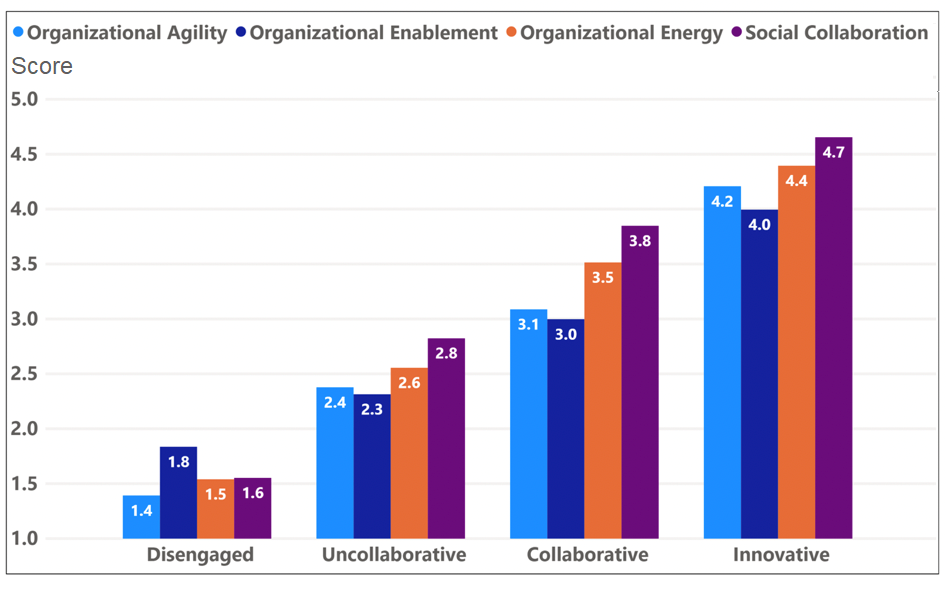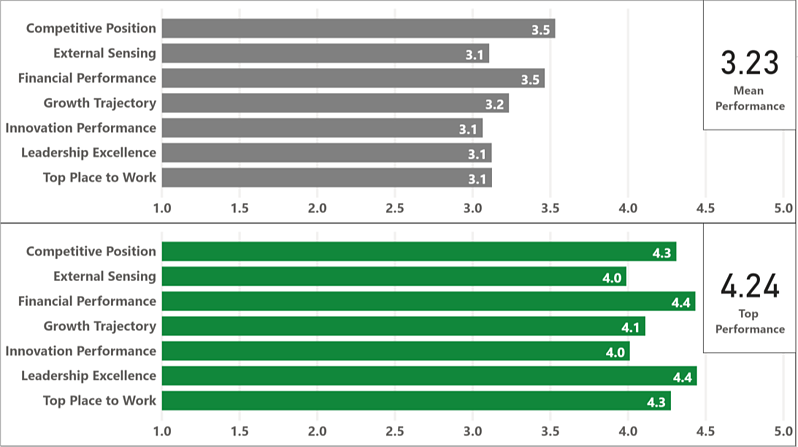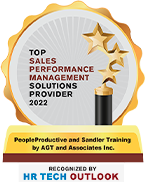Former CIO, Frank Wander, who now helps companies maximize team performance, shares the four human performance drivers leaders can harness to build a winning culture.
Recently, my company, PeopleProductive, conducted a study to validate the human factors that unlock growth, innovation, and business performance. Partnering with Rutgers University Business School, we assessed their alumni to gather the data and segmented the results into four performance quartiles.
In this era of rapid change and uncertainty, the data conclusively showed that caring and deeply human leaders create significant performance advantages for their companies. More importantly, we were able to validate that leaders can engineer a culture that outcompetes and outperforms by focusing on just four human performance drivers.
We have progressed into an era defined by empowered talent, where winning companies have leaders who get the best out of their people. For them, social skills are not soft but hard skills, and they leverage them strategically.
Take digital transformation as an example: it’s not a technology project but an ongoing human creative endeavor. Leaders who possess the skill to unlock their people’s agility and creativity can successfully tap the needed innovations from their workforce.
The End of Industrial Leadership Paradigm
We are witnessing an accelerating shift towards a human-centric leadership paradigm, where nurturing leaders outperform the rest because they consciously create highly-skilled, energized, and collaborative teams. The industrial leadership paradigm that treated people as interchangeable parts is now hazardous to business survival. The Millennial generation, soon to be 50 percent of the workforce, has rightfully rejected this dehumanizing leadership model and will accept lower pay to work in a great culture where people count.
So, to thrive, companies must build high aptitude teams; they must cultivate deep institutional experience because it has high productive value; and they must unlock innovation, speed, and growth using these four human performance drivers:
- Organizational Energy – consciously using passion and mood to shift people into high gear.
- Organizational Enablement – removing the workplace barriers that slow people down.
- Social Collaboration – optimizing how effectively people work together.
- Organizational Agility – leveraging the human ability to respond to rapidly changing conditions quickly. (Witness the effective and inspiring response to the unforeseen shift to work-from-home).
In Figure 1 below, you can see how human performance varies by quartile (Disengaged, Uncollaborative, Collaborative and Innovative). The innovative, peak performing companies are fully tapping into their people’s human performance potential.

Optimizing human performance unlocked business performance across every driver we studied. Companies in the fourth quartile (Innovative/Peak Performing) tapped into the best that their people had to give, and consequently turned in the best overall business performance.
In Figure 2 below, you can see how significantly these companies outperformed the mean. Their leaders are using human performance to drive business performance.

Although not shown above, the differences between the highest and lowest quartiles appear insurmountable. For instance:
- Leadership Excellence: 158 percent better than perceived performance in the lowest quartile and 42 percent above than the mean.
- Top Place to Work: 168 percent better than the lowest quartile and 38 percent better than the mean.
- Innovation Performance: 135 percent better than the lowest quartile and 29 percent better than the mean.
- Growth Trajectory: 86 percent better than the lowest quartile and 29 percent greater than the mean.
Human Performance Engineering
Innovative, peak performing companies use a high energy, collaborative culture as the foundation of an efficient and agile organization. They are able to achieve the most effective use of human capital. And this performance is not an accident or something magical, but rather the product of human performance engineering, either conscious (intentional) or unconscious (high aptitude). Leaders are the human performance engineers and it is their most important responsibility because people have become the most crucial tool in every company.
So, what is the science behind the engineering?
Quite simply, workers are human, and they have a broad set of needs that unlock the best they have to give when those needs are satisfied. Great leaders deeply understand the human side of business and can use these needs as tools. Even if they were gifted with high aptitude and do it unconsciously, they are pulling the right levers nevertheless.
Create a Collaborative, Energized Culture
From our research, organizational energy is the most important lever to pull because it turns the workplace into a power plant that delivers the energy needed to move faster, overcome obstacles, get more done, and tap the creative spirit. Great leaders can skillfully stir emotional energy to unlock peak levels of passion and motivation. They are skilled enough to couple this with an animating, “high vibe” organizational climate that increases the “amperage” even further, juicing the workforce with an external fuel source. High levels of energy are the precursor to an agile and innovative workplace.
Beyond energizing the workforce, they also build profoundly collaborative workplaces. Great people leaders understand the power of leading by example because they know people don’t do what they say, they do what they do. They model collaborative behaviors and make thoughtful, cross-functional collaboration a shared accountability; they weave teams together; they openly care about their people as humans who are more than just their jobs; and they know how to unlock a deep sense of belonging and caring for everyone.
Next, they push socially corrosive leaders and individuals out of the organization, which sends an unambiguous message to everyone about how important collaboration is to mutual success.
Great leaders don’t stop there. They also proactively remove barriers that make work difficult because these consume and waste the organization’s energy. A fully enabled workforce moves faster and is more agile because the fog and frustration of work are gone, making it easier and more fluid.
Lastly, effective leaders are able to architect an agile and resilient culture. Human agility and resilience need to be cultivated and married to business processes and technology that are also agile and resilient. High energy organizations have more bandwidth to devote to the reengineering that creates a resilient and agile business infrastructure. So, both the human and business infrastructures need to be shaped.
We have fully crossed the chasm into the digital age, leaving our industrial era leadership practices in the past. Legacy leaders need to reinvent themselves and build human skills, just like they learned how to artfully manage processes and technology. Legacy leaders who fail to build human skills and competencies will fade away, just like the industrial era that gave birth to them.




